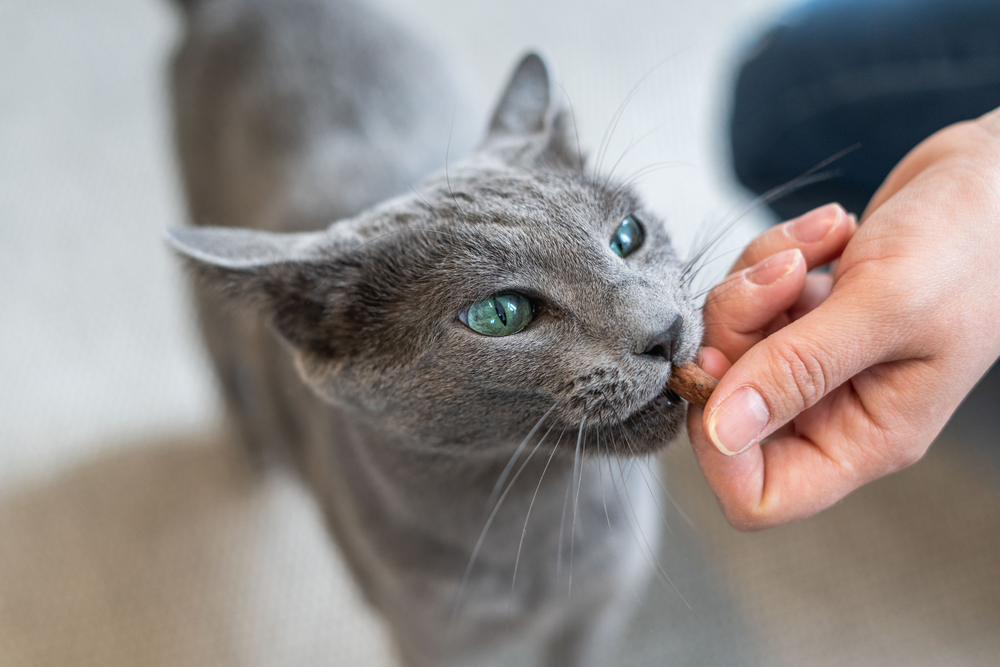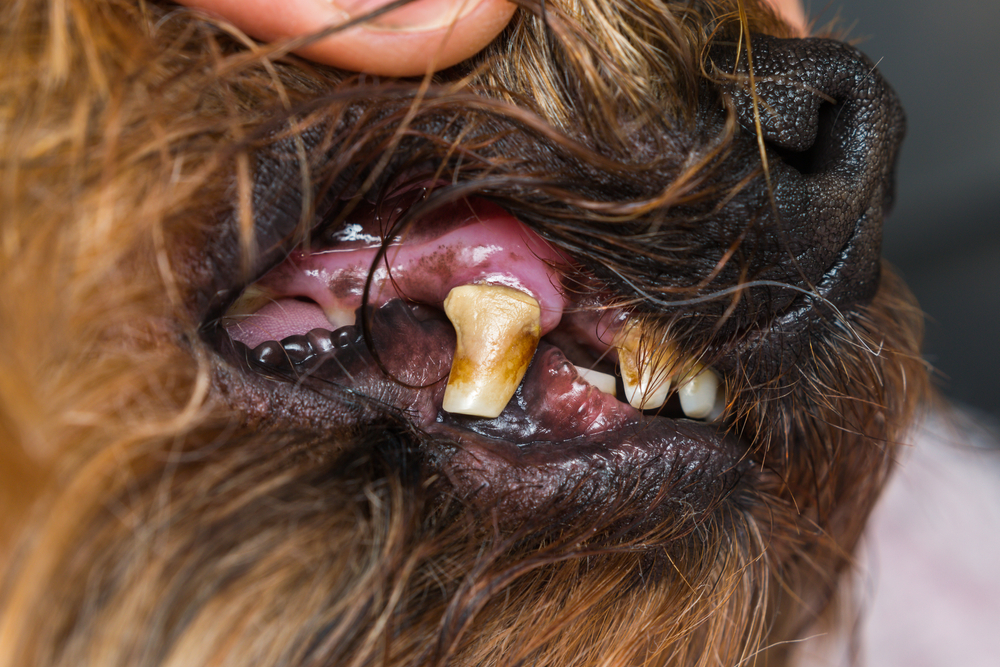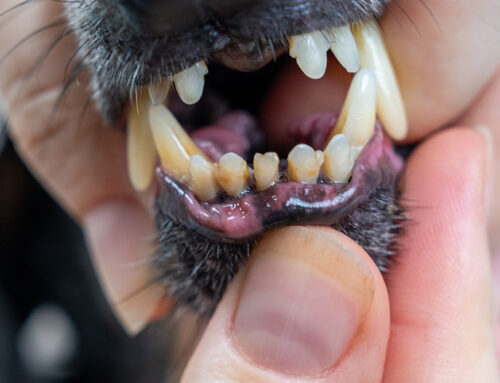Periodontal disease is the most common condition that affects pets, with up to 90% of them experiencing some form of gum disease by age 2. Because this widespread condition is likely causing your furry pal discomfort right now, read our North Bay Veterinary Dentistry team’s guide to learn how to identify, treat, and prevent this common pet disease.
What is periodontal disease in pets?
Excessive oral bacteria and their harmful effects cause periodontal disease in pets. When your pet eats, bacteria feast on food debris, and the culmination of bacteria, debris, and saliva form fuzzy plaque that sticks to their teeth within 24 hours. Without daily brushing, plaque hardens into cement-like dental calculus (i.e., tartar). Because tartar creates a rough surface on which plaque thrives, your pet’s mouth accumulates even more oral bacteria.
Bacteria-laden plaque initially causes gum inflammation (i.e., gingivitis). As bacteria work their way below the gumline, they can destroy the teeth’s supporting bone structure, infiltrate the bloodstream, and cause organ disease and systemic infection.
What are periodontal disease signs and stages in pets?
Based on the signs and resulting damage, periodontal disease is categorized in four stages. The four periodontal disease stages are:
- Stage 1 — Gingivitis (i.e., gum inflammation) is the first stage of periodontal disease. Signs include gum redness, swelling, and bleeding. Your pet will also likely have bad breath.
- Stage 2 — In the second disease stage, up to 25% of a tooth’s attachment to the supporting structures begins to deteriorate. Your veterinarian will see some bone loss on dental X-rays. In addition to exhibiting gingivitis signs, your pet’s gums may begin receding.
- Stage 3 — In the third stage, affected teeth have lost between 25% and 50% of surrounding bone support. On dental X-rays, your veterinarian will see moderate to severe bone loss and periodontal pockets around the affected teeth, which are likely loose.
- Stage 4 — When the fourth stage sets in, affected teeth have lost more than 50% of surrounding bone support. The roots of affected teeth will likely be exposed. In addition, your pet will likely have missing teeth and gum pockets oozing infection. Once a tooth reaches the final periodontal disease stage, it is so infected and damaged that your veterinarian must extract it for your pet’s health and comfort.
Because of oral pain, a pet with periodontal disease may also exhibit behavioral changes. Your pet may experience the following:
- Chewing and eating difficulties
- Pawing or rubbing at their face and mouth
- Reluctance to eat hard foods or treats
- Withdrawal or aggression
- Pulling away when their head or face is petted
How is periodontal disease treated in pets?
Treatment for periodontal disease depends on the severity of your pet’s condition. In the initial stage, periodontal disease can be reversed through daily toothbrushing and a prophylactic professional dental cleaning to ensure the condition does not worsen. As periodontal disease progresses, your veterinarian will need to take more advanced and aggressive measures to save affected teeth. Our team will perform a thorough oral exam and comprehensive professional cleaning. We may also apply an antibiotic gel into the infected periodontal pockets. Root planing and tissue regeneration procedures may be necessary to restore oral health.
Is periodontal disease preventable in pets?

Periodontal disease can cause your pet significant health issues and extreme pain. However, you can tackle your pet’s oral bacteria and prevent dental problems at home by doing the following:
- Brush your pet’s teeth — Nothing thwarts plaque accumulation as well as daily toothbrushing. Grab a pet-friendly toothbrush and toothpaste, and scrub away your furry pal’s oral bacteria each day.
- Offer approved dental treats and chews — Not all treats and chews reduce plaque and tartar accumulation as well as they claim. To provide your pet with maximum periodontal disease protection, give them products that bear the Veterinary Oral Health Council (VOHC) seal of acceptance.
- Use food and water additives — You can sprinkle or pour enzymatic and antiseptic dental products on your pet’s food and water to help reduce oral bacteria and plaque.
- Wipe your pet’s teeth — If your pet is not a fan of daily toothbrushing, try swiping their teeth with a dental wipe to get rid of some plaque before it mineralizes.
- Switch to a prescription dental diet — Some pets need a specially designed dental health diet that essentially scrapes away plaque with every bite your four-legged friend takes.
In addition to daily at-home dental care, you should schedule your pet’s regular oral health exams and professional dental cleanings. At-home care typically only tackles bacteria and plaque that accumulate above the gumline, while professional dental exams and cleanings identify and treat problems below the surface. Schedule your pet’s professional periodontal care with our North Bay Veterinary Dentistry team.






Leave A Comment